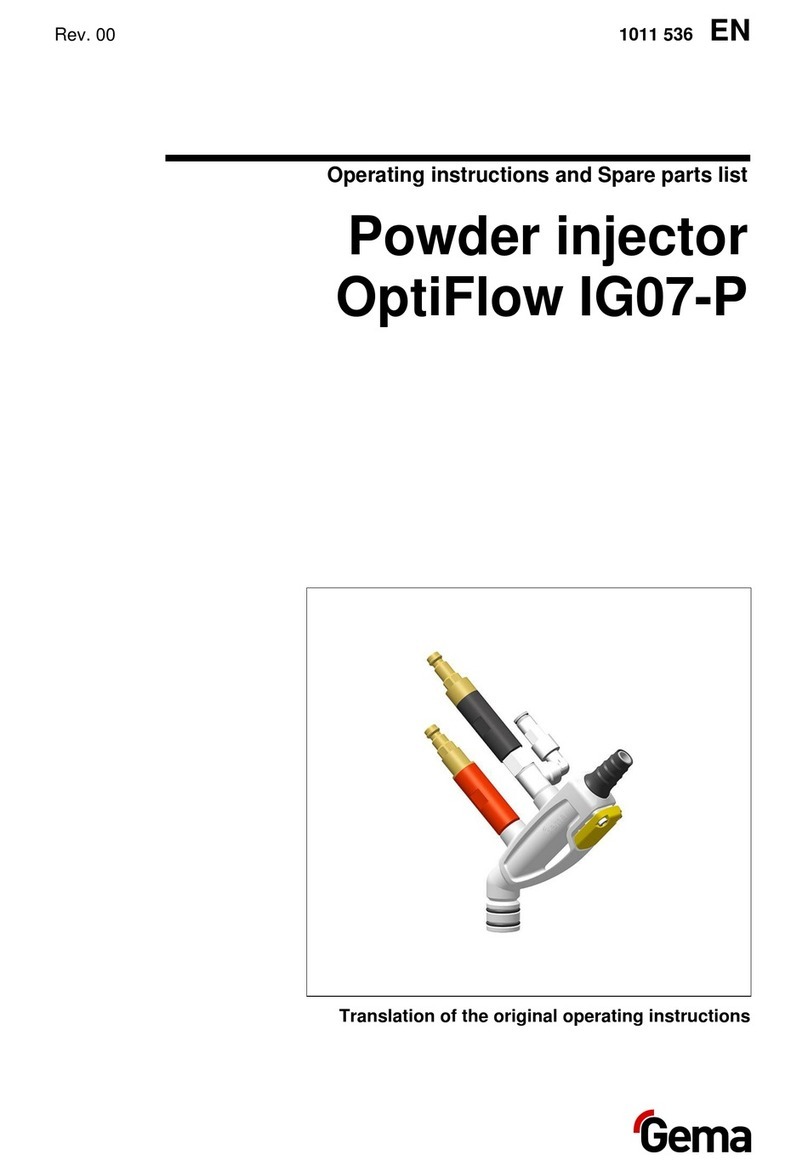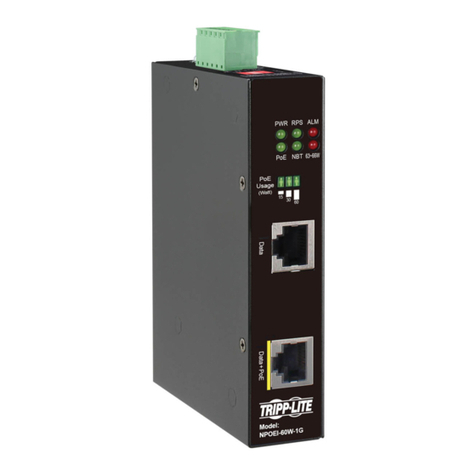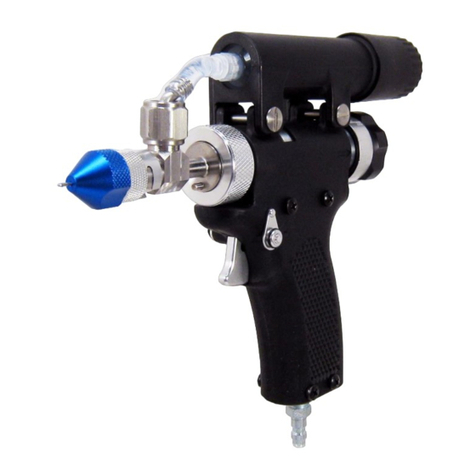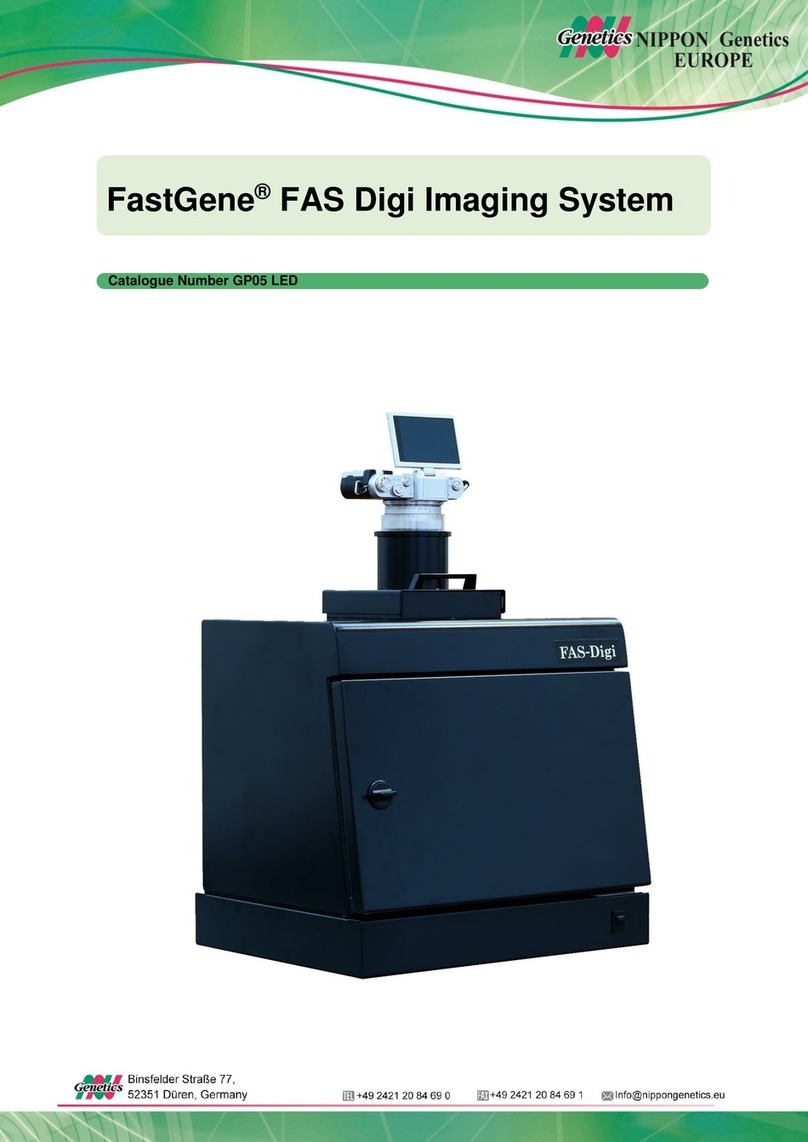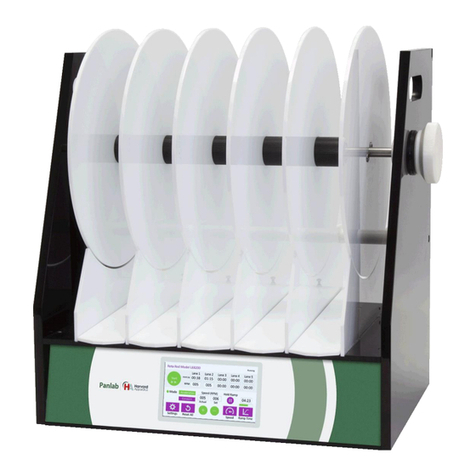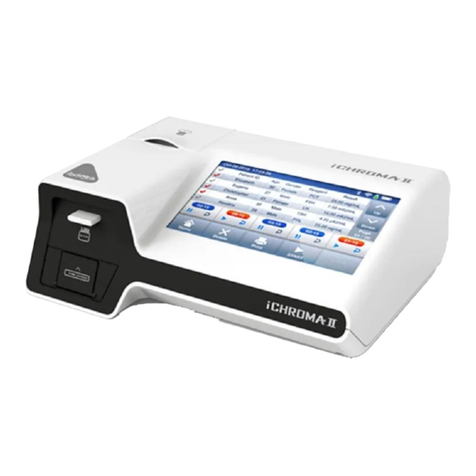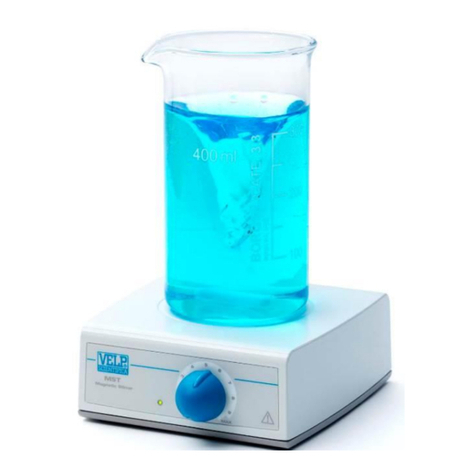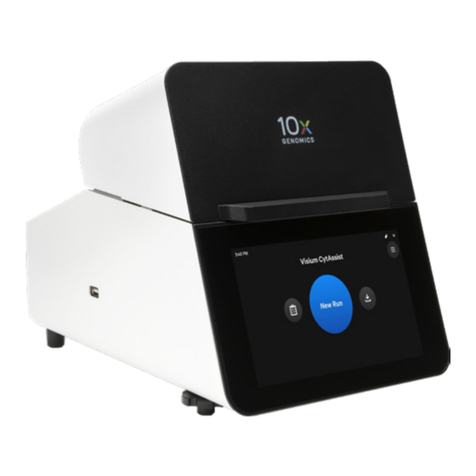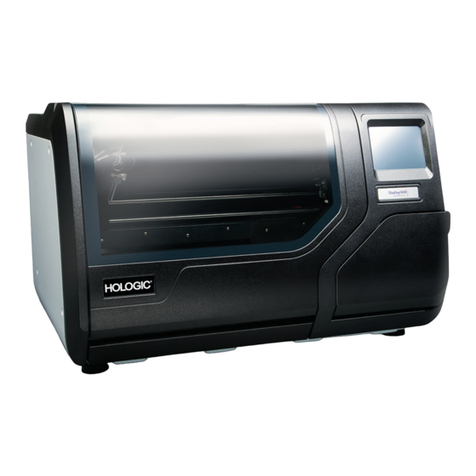Aquila Biolabs CGQ User manual

1
The CGQ system –an overview
CGQ user
guide
A handbook for cell density monitoring in
shake flask and bioreactor applications

2
The CGQ system –an overview

3
The CGQ system –an overview
Table of contents
Introduction and general considerations ................................................................. 7
The CGQ system –an overview.......................................................................................... 10
Absolute maximum ratings....................................................................................................... 11
CGQuant hardware requirements ...................................................................................... 12
Recommended operating conditions................................................................................. 13
Warnings.............................................................................................................................................. 15
Declarations and certificates.................................................................................................... 17
CE conformity............................................................................................................................ 17
WEEE conformity.................................................................................................................... 19
FCC compliance....................................................................................................................... 20
Installation, disinfection and quick start .................................................................21
Installing the CGQ components on your shaker........................................................ 21
Using screws ............................................................................................................................... 21
Using sticky pads ...................................................................................................................... 22
Mounting a sensor plate...................................................................................................... 25
Mounting the shake flask and the flask cover......................................................... 29
Cable management within the shaker ........................................................................ 32
Installing the CGQ on a bioreactor..................................................................................... 34
Installing the CGQuant software .......................................................................................... 35
On your own PC or laptop .............................................................................................. 35
On a PC or laptop delivered together with your CGQ system................ 35

4
The CGQ system –an overview
Disinfection......................................................................................................................................... 36
Quick start tutorial......................................................................................................................... 37
CGQ’s basic measurement principles.....................................................................43
Optical cell density measurements...................................................................................... 43
Challenges in shaken and stirred environments........................................................... 46
Correlation between OD600 and the CGQ signal..................................................... 48
Parameters that influence the CGQ measurements................................................ 52
The CGQuant software..............................................................................................60
Introduction to CGQuant......................................................................................................... 60
CGQuant files and dependencies ........................................................................................ 61
The main window .......................................................................................................................... 64
The overview window................................................................................................................. 66
The experiment window ........................................................................................................... 67
The process information window ........................................................................................ 70
The CGQ Experiment Configurator.................................................................................. 74
Controlling the measurement................................................................................................. 76
Annotations........................................................................................................................................ 79
Comparing multiple measurements.................................................................................... 81
Using the central chart ................................................................................................................ 82
Data post-processing –Curve adjustment ..................................................................... 84
Data post-processing –Growth rate calculation........................................................ 88
Data post-processing –Growth event detection....................................................... 90

5
The CGQ system –an overview
Data post-processing –Consensus data.......................................................................... 96
Exporting the data to .xlsx files............................................................................................100
Exporting the data to .pdf files .............................................................................................102
Exporting the data to .png files ............................................................................................104
Collecting calibration data.......................................................................................................105
Using calibration data.................................................................................................................113
Updating the sensor plate firmware .................................................................................115
Updating the base station firmware..................................................................................118
The CGQ Monitor ......................................................................................................................122
Help section .................................................................................................................123
Troubleshooting ............................................................................................................................123
Solving connection issues..................................................................................................124
Solving data acquisition issues........................................................................................126
Solving calibrator issues......................................................................................................128
Solving data interpretation issues.................................................................................129
Contact ...............................................................................................................................................130
Notes ...................................................................................................................................................131
CGQ experiment checklist.....................................................................................................136

6
The CGQ system –an overview

7
The CGQ system –an overview
Introduction and general considerations
Welcome to the CGQ user guide and congratulations for your decision of
choosing the CGQ system to monitor your cell cultivation applications. The
idea of this user guide is to give you access to all information required to install,
integrate and use the CGQ within your laboratory everyday life. Generally, it is
strongly recommended to read this user guide prior to any installation or
operation works with the CGQ system.
Caveats are indicated by yellow warning signs.
Dangers and risks are indicated by red danger signs.
In order to ensure that this user guide provides you all information you need
during your work with the CGQ, we as aquila biolabs are reliant on your
feedback. Do not hesitate to contact us to share your ideas regarding errors,
missing information or incomprehensibilities so that we can improve this
document and keep it up to date with your requirements.
This user guide is under continuous development and should be recognized as
preliminary. This user guide, the CGQ device and the CGQuant software may
be subjected to changes and improvements without further notice.
Important aspect:
This kind of grey box will be used throughout the complete document
for the indication of important aspects, hints or summaries.

8
The CGQ system –an overview
In case of any question that might arise during the work with CGQ and
CGQuant, do not hesitate to contact us (Contact details on pp. 130).
CGQ user guide revisions:
Revision 0
22.09.2015
- initial document
Revision 1
08.06.2016
- minor corrections
Revision 2
24.03.2017
- major changes regarding CGQuant features
- major changes regarding firmware updates
- disinfection
Revision 3
30.06.2017
-addition of statistical analysis feature
- minor changes and corrections
Revision 4
30.11.2017
- addition of experiment restoration
- addition of CGQ Monitor application
- minor changes and corrections
Revision 5
08.10.2018
- introduction of CGQ BioR, CGQ 2.0 and
CGQuant 8.0
- addition of:
- environmental light compensation
- multiple base stations
- event detection system
- minor changes and corrections
Revision 6
(current)
22.07.2019
- CGQuant 8.2 with Experiment configurator
- minor changes and corrections
This user guide (revision 6) applies only to CGQ devices
sold after 01.10.2018 together with CGQuant 8.x.
Users of previously sold CGQ devices together with
CGQuant 7.4 should consider CGQ user guide revision 4.
The latest manual is available on our homepage under
www.aquila-biolabs.de/service/downloads.

9
The CGQ system –an overview

10
The CGQ system –an overview
The CGQ system –an overview
The CGQ is an analytical laboratory device that is primarily intended to be used
for noninvasive cell density monitoring in real-time, especially in shake flasks
(CGQ) and bioreactor (CGQ BioR) applications. However, even completely
different applications requiring the real-time analysis of particle concentrations
can be addressed by the CGQ system.
Figure 1: The CGQ system –Cell density monitoring for shake flasks and bioreactors.
The CGQ system consists of three different main components, the sensor plate,
the base station and the CGQuant software. Each component serves a different
purpose. The sensor plate is the physical heart of the CGQ-system, as it
performs the measurements and subsequent initial data processing tasks.
Several sensor plates are connected to the base station, which organizes all the
communication traffic between the CGQuant software and the sensor plate.
Furthermore, the base station acts as the central power supply for all the
connected sensor plates. Finally, the CGQuant software is the user’s window to
the world of high precision real-time analysis of cell densities in a broad variety
of cultivations processes and applications. CGQuant does all the visualization,
data analysis, post processing, exporting, reporting and controlling that is
required in order to provide all CGQ users with an intuitive and comfortable
solution to watch, analyze and store their experimental data.

11
Absolute maximum ratings
Absolute maximum ratings
Power supply input
voltage
current
90 –264 VAC (47 –63 Hz)
1 –2 A
Power supply output
voltage
current
5 VDC
6 A
Power supply operating temperature
-30 –60 °C
CGQ base station input
voltage / ripple
5.0 VDC / 0.1 VDC
CGQ base station output
voltage
current
5.5 VDC
3 A
CGQ operating temperature
(tested)
10 –50 (75)1°C
1
The CGQ has been operated for weeks at 75°C without any noticeable damaging;
however there is currently not enough experience with such high temperatures to specify
them as typical operation condition. While it is not guaranteed to work at 75°C, the
CGQ will do that in most expectable cases. Operating the CGQ above 50°C requires
special darkening covers, which can withstand elevated temperatures and which are not
part of the standard device.

12
CGQuant hardware requirements
CGQuant hardware requirements
CPU
current dual core @ 2 GHz/core or better
RAM / HDD
≥8 GB / ≥10 GB
Operating system
Microsoft Windows 7 or newer with .NET 4.7
Screen resolution
1920 x 1080 pixels
For a good user experience, it is strongly recommended to run CGQuant on
processors not older than from 2012.
The CGQuant performance requirements scale with the number of flasks being
monitored in parallel. For highly parallelized systems it is therefore
recommended to use processors that are optimized for performance and not
for energy efficiency (as many mobile processors).
The CGQuant performance and user experience can be adjusted for low
performance systems in the preferences window by:
-decreasing the number of visible points per chart
-increasing the general sampling period
-increasing the auto-backup interval.
It is strongly recommended to disable automated updates in the Windows
operation system settings, to prevent undesired system restarts upon Windows
Update events. You should however regularly check for Windows updates and
install them manually to keep your operating system up-to-date.
It is recommended to use the “High performance” power plan in the Windows
power options.
You can also contact us to verify your chosen system settings.

13
Recommended operating conditions
Recommended operating conditions
Temperature
10 –50 °C
(Ensure to let the sensor plates adjust to
the operating temperature for 30 min.)
Humidity (relative)
0 –80% (non-condensing)
Shake flask filling volume
optimal range
good range1
applicable range2
extended range3
10 –15%
5 –25%
2 –30%
0 –50%
Shaking speed
optimal range4
using screws
shaking diameter ≤2.5
cm
shaking diameter ≤5.0
cm using sticky pads5
150 –350 rpm
0 –350 rpm
0 –250 rpm
0 –200 rpm
1
Measurement quality should be as good as for the optimal range, in few cases slightly
reduced precision or weak artifacts might be observed.
2
Measurement quality should be acceptable, in some cases reduced precision or artifacts
might be observed.
3
Measurement quality can be acceptable, in many cases reduced precision or artifacts
might be observed, filling volumes above 50% shouldn’t be used to avoid spilling of the
liquid during shaking.
4
Use these speeds for optimal measurement results, for other shaking speeds within the
general specification range, in few cases slightly reduced precision or weak artifacts might
be observed.
5
To ensure safe shaking condition, always refer to the user guides of your sticky pad
manufacturer, if recommended shaking speed limits in the sticky pad user guides are
lower than those denoted here, use only those shaking speeds specified in the sticky pad
user guides

14
Recommended operating conditions
Environmental light1
optimal CGQ
performance2
- with shake flasks3
- with bioreactors4
- phototrophic cultivations5
darkened by CGQ covers
coverless
coverless
1
The CGQ actively compensates environmental light. Depending on the application
specific environmental light and cultivation conditions, this compensation may be
incomplete. Constant environmental light can be compensated efficiently by the CGQ.
Strong changes of the environmental light intensity (e.g. from absolute darkness at night to
bright daylight at a sunny mounting positon) may be visible as step-like artifacts in the
measurement data.
The susceptibility for environmental light induced measurement artifacts may be increased
for environmental light transitions, which include periods of absolute darkness with
pronounced artifacts especially in shaken cultivation systems.
2
Optimal measurement performance with regard to sensitivity at low cell densities, optimal
signal-to-noise ratio and minimized number and size of measurement artifacts.
3
In accordance with the above remarks, shake flask cultivations should be performed with
CGQ covers, when operated under environmental light conditions with periods of
absolute darkness.
4
In accordance with the above remarks, bioreactors as non-shaken systems are less
susceptible to strong changes of environmental light intensities.
5
In accordance with the above remarks, phototrophic cultivations provide constantly
defined environmental light conditions, which can be efficiently compensated by the
CGQ. The limit of environmental light compensation is the CGQ’s saturation intensity,
which may be reached under certain phototrophic lighting conditions.

15
Warnings
Warnings
Do not use the CGQ system or any of its components in
water bath shakers! This might result in electric shocks,
which could damage your health, the CGQ and any other
electric device around.
Do not look into the beam of any of the CGQ sensor plate
LEDs! Their emitted light is of high intensity and might
damage your eye or retina. Wear protective eye wear.
Avoid direct eye and skin exposure to the CGQ sensor
plate LEDs! Always keep a safety distance of >1m to any
active CGQ sensor plate LED. Always pause or stop
running measurements before operating within this safety
distance.
CGQ sensor plates (e.g. CGQ BioR) may contain IR-LEDs
emitting invisible high intensity light. Do not look into any
CGQ sensor plate LED to avoid the exposure of your eyes
or skin to dangerous invisible infrared light. Sensor plates
carrying IR-LEDs are labeled with the following warning
sign:
Do not touch, wet or electrically bridge the base station
connectors, especially when the base station is connected
to a power supply! This might result in damage to your
health and/or the CGQ device.
Do not connect any sensor plate via its USB connector,
while the sensor plate is connected to the base station at
the same time! This might result in damage to the CGQ
and any other device connected to it via USB.
Be careful when mounting CGQ sensor plates into spring
clamps to avoid injuries such as contusions, cuts or bruises.
Be careful when handling the shake flask covers. They
might have sharp edges that might cause injuries such as
cuts.

16
Warnings
Always stop the shaker before handling the CGQ device
or the shake flasks. For mounting and dismounting
purposes, the shaking should be turned off to avoid damage
to your health and to the devices and flasks on the shaker.
Do not spill liquids over any of the CGQ components.
Especially the sensor plates might get damaged or the
windows above the sensors might become dirty, thus
negatively influencing the following measurements.
Do not use inorganic or organic acids and bases, organic
solvents or detergents to clean the CGQ! Some solvents
or detergents might be allowed for cleaning, but you
should only use those being mentioned in the user guide.
Any kind of opening, manipulating or copying CGQ devices
as well as decompiling, reverse-engineering, copying or
distributing CGQuant or the CGQ firmware components
is strictly prohibited in accordance with German and
international law and may lead to compensation claims.

17
Declarations and certificates
Declarations and certificates
CE conformity
The aquila biolabs GmbH, Arnold-Sommerfeld-Ring 2, 52499 Baesweiler,
Germany, herewith declares under its sole responsibility that all devices and
equipment being part of the CGQ system and being manufactured by the aquila
biolabs GmbH are in conformity with the Council Directives regarding
-Low Voltage Equipment Safety (2014/35/EU)
-→evaluated on the basis of EN 61326-1:2013 and EN 62471:2009
-Electromagnetic Compatibility (2014/30/EU)
-→evaluated on the basis of EN 61010-1:2010
-Restriction of certain Hazardous Substances (2011/65/EU)
-→evaluated on the basis of EN 50581:2012.
This declaration applies to all products with the following identifiers:
CGQ sensor plates:
-CGQ-SP-100-BV Revisions: 1.00
-CGQ-SP-250-BV Revisions: 1.00
-CGQ-SP-500-BV Revisions: 1.00
-CGQ-SP-1000-BV Revisions: 1.00
-CGQ-SP-2000-BV Revisions: 1.00
-CGQ-SP-F Revisions 1.00, 1.10
-CGQ-SP-B Revisions 1.00, 1.10

18
Declarations and certificates
CGQ base stations:
-CGQ-BS-8-BV Revisions: 1.00, 1.10
-CGQ-BS-16-BV Revisions: 1.00, 1.10
Technical documentation is maintained at the aquila biolabs GmbH headquarter
in Arnold-Sommerfeld-Ring 2, 52499 Baesweiler, Germany.
Date of declaration: 14.09.2018
Name, position of the undersigned: Konrad Herzog, Managing Director
Research & Development

19
Declarations and certificates
WEEE conformity
WEEE-Registration-No.: 61144888
The aquila biolabs GmbH, Arnold-Sommerfeld-Ring 2, 52499 Baesweiler,
Germany, herewith declares compliance of all electronic components of the
CGQ system with the Council Directive 2012/19/EU.
Electronic components may contain various hazardous substances that could
possibly exhibit negative impacts on your health and the environment. In order
to avoid those effects aquila biolabs encourages you to make use of the
appropriate local take-back and recycling systems for disposing electrical and
electronic equipment. By doing this you are furthermore significantly reducing
the pressure on natural resources and thus preserve our planet for subsequent
generations.
Components that are affected by this declaration carry the following pictogram:
Date of declaration: 02.11.2015
Name, position of the undersigned: Konrad Herzog, Managing Director
Research & Development

20
Declarations and certificates
FCC compliance
This is a Class A product.
This device complies with Part 15 of the FCC Rules. Operation is subject to the
following two conditions:
(1) this device may not cause harmful interference, and
(2) this device must accept any interference received, including interference that
may cause undesired operation.
This equipment has been tested and found to comply with the limits for a Class
A digital device, pursuant to part 15 of the FCC Rules. These limits are designed
to provide reasonable protection against harmful interference when the
equipment is operated in a commercial environment. This equipment generates,
uses, and can radiate radio frequency energy and, if not installed and used in
accordance with the instruction manual, may cause harmful interference to radio
communications. Operation of this equipment in a residential area is likely to
cause harmful interference in which case the user will be required to correct
the interference at his own expense.
Table of contents
Other Aquila Biolabs Laboratory Equipment manuals



